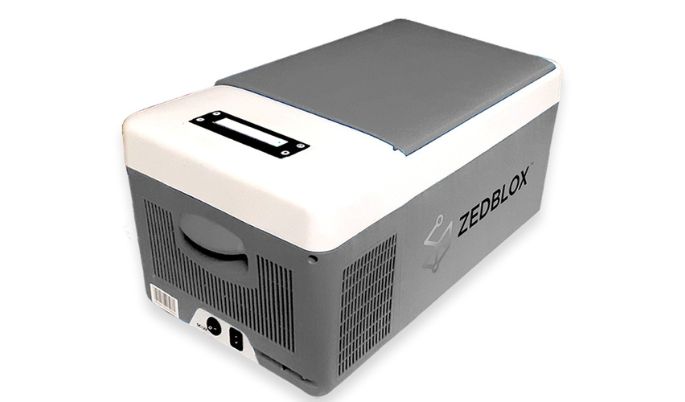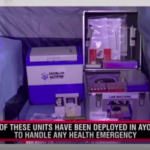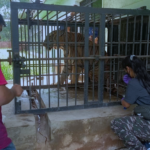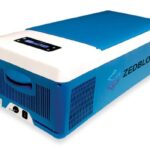Cold chain logistics is the process of transporting and storing temperature-sensitive goods, such as pharmaceuticals, vaccines, and other temperature-sensitive products, in a controlled environment to maintain their quality and integrity throughout the supply chain. It involves the use of specialized equipment and transportation methods, such as refrigerated trucks, containers, and warehouses, equipped with temperature-controlled environments.
The primary objective of cold chain logistics is to keep the temperature of the goods within a specific range, depending on the product. Temperature monitoring is crucial in this process as it allows for the continuous tracking of the product’s temperature, ensuring it remains within the required range and is not exposed to fluctuations that could compromise its quality, potency, or safety. Temperature monitoring devices like data loggers and temperature sensors are utilized to monitor goods during transportation and storage, providing real-time data that can be remotely monitored for timely interventions if temperature deviations occur.
Effective cold chain logistics is particularly critical for temperature-sensitive biological products, vaccines, and pharmaceuticals, as any temperature deviation can result in spoilage, reduced shelf life, or render the product ineffective or harmful. Thus, the success or failure of these products heavily relies on the integrity of the cold chain.
In the medical industry, the cold chain system plays a vital role in ensuring the quality and safety of sensitive products like vaccines, blood products, drugs, and medical devices containing biological materials. Vaccines, for instance, require specific temperature conditions to maintain their efficacy. Deviations from the recommended temperature range can lead to a loss of potency and render the vaccines useless, which is especially concerning for diseases that can be prevented through vaccination.
The cold chain is also crucial for the storage and transportation of blood products, as maintaining proper temperatures prevents bacterial growth and potential infections. Contaminated blood products can cause severe complications for patients. Similarly, drugs used to treat life-threatening conditions are often temperature-sensitive and require proper storage to maintain their effectiveness. Without the cold chain, the potency and safety of these sensitive products would be compromised, posing significant risks to patients.
What is a Vaccine Carrier Box?
A vaccine carrier box is the way to go if you need a container to store and carry vaccines. They are lightweight and tiny, so they take up little space. They are typically used to transport vaccines from centralized storage facilities to vaccination sites or to transport a limited quantity of vaccinations for community outreach. They are often insulated to reduce temperature fluctuations, and they can also be used with ice or gel packs to maintain a more consistent temperature. They have a storage volume of 0.8-3.4 liters and are classified into two types based on their range. Shorter trips can have a maximum temperature of 43 degrees Celsius for up to 15 hours, while longer trips have a minimum temperature of 30 degrees Celsius.
Since any interference from the outside environment can pose a significant risk to the viability of the vaccine, we need to ensure that:
- Vaccine Carrier Boxes should be clean and dry
- Ice Packs should be left at least 30 minutes outside at room temperature until the ice starts to melt before they are placed into the vaccine carrier boxes in order to reduce the risk of vaccine freezing.
- Ice packs should be wiped and dried before being placed into the vaccine carriers.
- Vaccine vials should be kept in a box or plastic bags to prevent the peeling of the label due to the presence of moisture
A vaccine vial monitor is present on every vaccine vial that allows verification that the vaccine has not been damaged by heat. The darkening of the square inside the circle indicates that the vial is exposed to heat. Only the vials whose squares are lighter than the surrounding circle should be used for vaccination.
Things to Keep In Mind While Choosing a Vaccine Carrier Box
The characteristics or parameters that one should keep in mind while choosing a vaccine carrier include :
Durability
The carrier should be strong enough to endure the rigors of transportation, such as harsh handling, exposure to inclement weather, and accidental drops.
Size
The carrier’s size should be proportional to the number of vaccines being delivered. It should also be lightweight and portable, especially when traveling to isolated regions.
Insulation
The carrier should be sufficiently insulated to keep heat out and the vaccines cool. This is critical for keeping vaccines effective and safe for usage.
Pricing of Carriers
Shipping charges might account for a sizable amount of the total cost of the product when it is delivered. As a result, it is critical to evaluate not only the cost of the carrier but also the cost of shipment. Invest in a product that fits your budget and meets your program’s requirements.
Cold Chain Adherence
The carrier must adhere to the vaccine manufacturer’s cold chain criteria. This involves maintaining the proper temperature range, handling the vaccinations carefully, and preventing the vaccines from being exposed to potentially harmful factors such as light or heat.
Freeze Preventing products
Consider utilizing freeze-preventing carriers if your Expanded Immunisation Programme (EPI) involves frozen water packs. These containers are great for preventing vaccine harm from subfreezing temperatures, and they can stay cold for an extended period of time without being conditioned with ice packs. Freeze-proof containers with the same features are now being developed, however, the amount of storage space required may be lowered by adding a barrier to keep the vaccines from freezing to the ice packs.
Temperature Monitoring
The carrier should be equipped with a temperature monitoring device to guarantee that the vaccinations remain within the specified temperature range throughout the trip. This is critical for preserving the vaccine’s potency and efficacy.
Water Packs
Check to see whether water packs are supplied with the carrier, and if not, get appropriate ones online. The carrier should also provide information on the number and range of water-pack models required. It is advisable to select two sets, one of which may be stored in the freezer and the other of which can be used.
Standardization in water packs
Logistics experts advise using only one size of water bag for the duration of your program. This helps to avoid people utilizing water packs that are too large for the available vaccine carrier boxes, which can make the distribution procedure easier.
Add on (Accessories)
While not all vaccination carriers have additional accessories, those that do may include carrying straps or backpacks. These features, in addition to the container itself, may raise the entire cost. If you’re looking for a vaccine carrier box, check with the manufacturer and distributor via your purchasing agent.
Limitations Faced By the Vaccine Carrier Box
The current vaccine carrier boxes have some operational challenges which include
The health of ice pockets
Conditioning ice packs prevents vaccinations (freeze-sensitive vaccines such as the Hep B and T series) from freezing during shipment. If freeze-sensitive vaccinations come into direct contact with frozen ice packs, they can be destroyed.
Transportation Losses
Improper transportation storage, which may expose vaccines to temperatures outside of the authorized ranges, can reduce their efficacy.
Exposure to sunlight
When exposed to sunlight, ultraviolet (UV), or fluorescent light, several vaccines lose their efficacy and efficiency.
Chamber insulation
Any defect in the chamber insulation can result in losing the potency of the vaccine due to thermal leakage from the chiller.
Temperature variations
Some amount of product waste can be caused by temperature damage with inadequate temperature control in all climates.
In the event of a cold chain breach, perform the following procedures:
- Never discard any vaccinations or storage equipment.
- Maintain the cold chain by quarantining all affected vaccines from unaffected vaccinations. Mark these clearly as isolated and “not for use. Under NO CIRCUMSTANCES should these immunizations be given to patients until they have been proven safe.
- Transfer the contaminated vaccine stock to a different environment [Fridge/validated cool box] that is monitored and capable of maintaining the recommended temperature range of +2°C to +8°C. If this is not possible, keep the vaccinations in the affected refrigerator closed until further guidance is obtained.
- Ensure the vaccine fridge involved in the cold chain breach, remains switched on at the main electrical supply and the thermometer and probe are undisturbed and staff are aware not to access the fridge.
- Take an inventory of all exposed vaccines, quantity, batch number/expiry date, and position in the fridge. Investigate whether any patients have been vaccinated by stock compromised by the cold chain breach. Complete the Vaccine Incident checklist form.
- Contact the manufacturers of the affected vaccines to asses which if any vaccines are still appropriate for use ‘off label’. For a list of all manufacturers and their contact details. Discard all vaccinations which have been confirmed as not stable according to National and local policy.
ZedBlox ActiPod assures the safety and effectiveness of temperature-sensitive items such as vaccines throughout transportation and storage, making it a dependable and necessary vaccine carrier box for healthcare facilities and professionals during Immunisation. Contact us today to learn more about our product and how it can help you keep your vaccinations’ potency and purity.
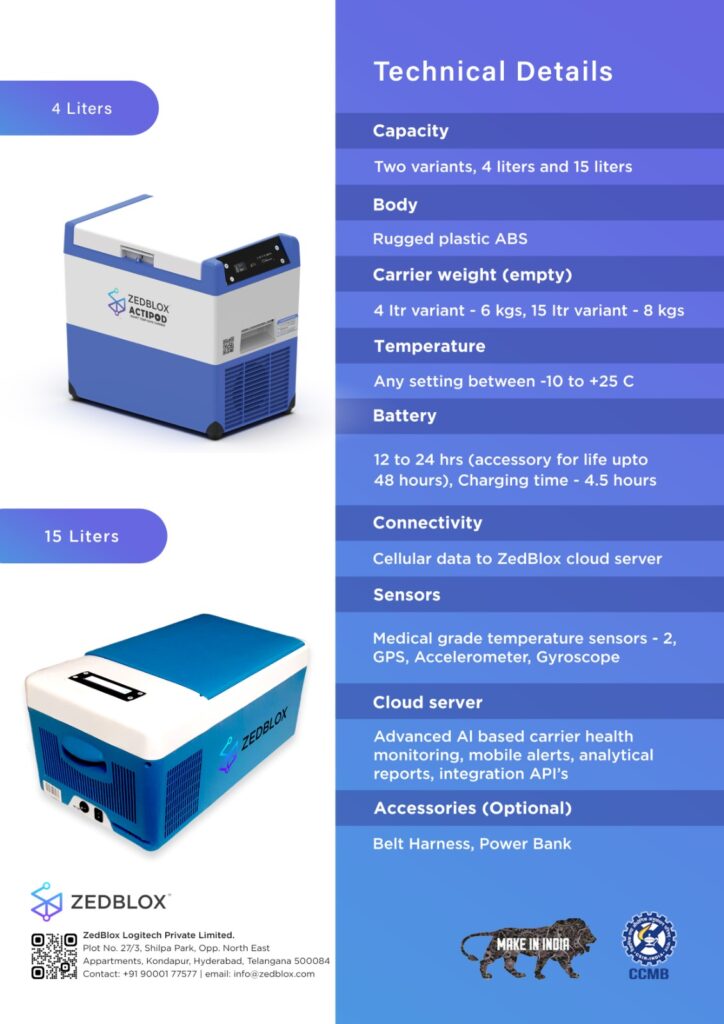
Ref:

